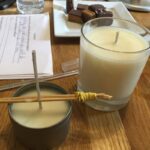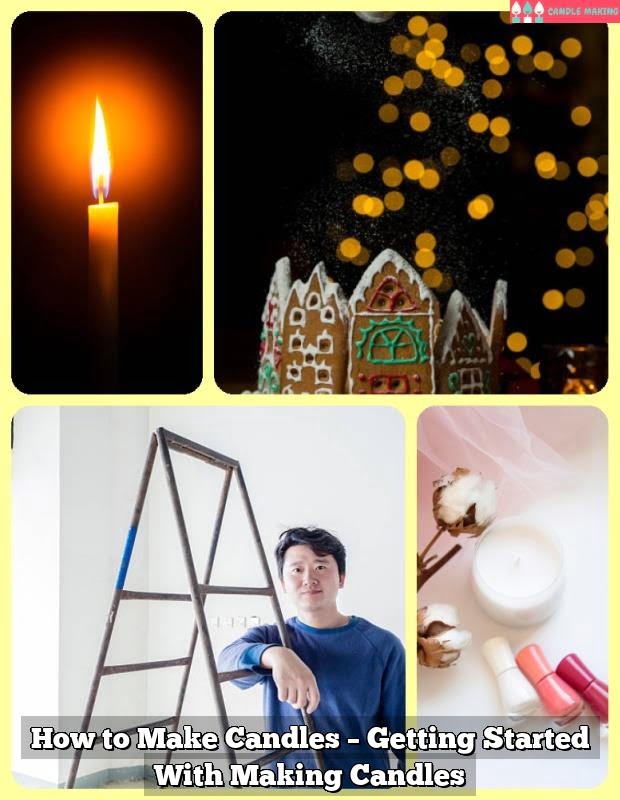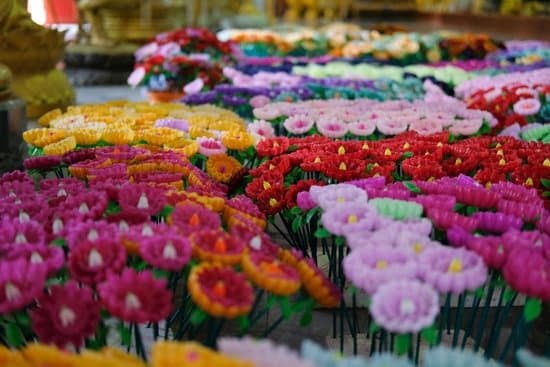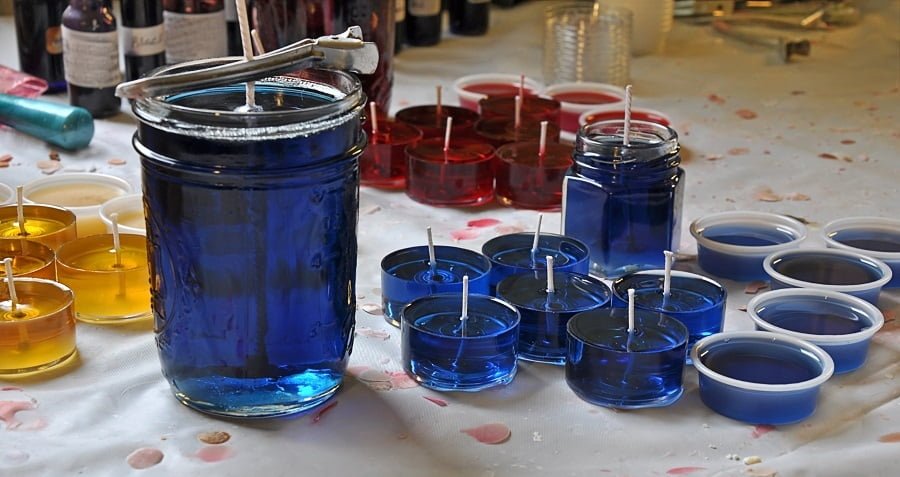Candles have been a part of human history for thousands of years, serving as a source of light, warmth, and even religious significance. The origins of candle making date back to ancient civilizations, with the earliest evidence of candles dating back to over 5,000 years ago. In this article, we will explore the fascinating history of candle making, from its early techniques to its enduring legacy in modern times.
The art of candle making has evolved significantly over the centuries, with early civilizations using various natural materials such as beeswax, tallow, and animal fats to create rudimentary forms of candles. As we delve into the history of candles, we will take a closer look at the techniques and materials used in the early days of candle making, shedding light on how this essential source of light has developed through the ages.
One question that often arises when exploring the history of candle making is: who first started making candles? The answer to this question is not straightforward, as various ancient civilizations across different regions are believed to have independently discovered the art of creating candles.
As we examine the origins of candle making, we will unravel the mysteries surrounding who first began harnessing the power of candlelight for practical and symbolic purposes. Join us on an illuminating journey through time as we explore how candles have played a pivotal role in shaping human culture and society.
Early Candle-Making Techniques
Candle-making is an ancient art that has been practiced for thousands of years. The origins of candle making can be traced back to the ancient Egyptians, who are believed to be the first civilization to create and use candles. These early candles were made from animal fat and reeds, giving them a rudimentary form compared to the modern candles that we are familiar with today.
The Romans also played a significant role in the history of candle making. They improved upon the early techniques by dipping papyrus reeds repeatedly in melted tallow or beeswax, creating a more advanced and efficient method of candle production. The resulting candles were used for religious ceremonies, lighting, and as gifts.
In addition to these early civilizations, it is important to note that the Chinese also developed their own methods of making candles using whale fat during the Qin Dynasty (221-206 BC). This demonstrates that candle making was not only widespread among different cultures but was also an essential part of daily life across various civilizations throughout history.
| Earliest Known Candle Makers | Materials Used |
|---|---|
| Egyptians | Animal fat and reeds |
| Romans | Tallow or beeswax-dipped papyrus reeds |
| Chinese | Whale fat |
The Origins of Candle Making
Candles have been used for centuries and are known to have been around since at least 3000 BC. The ancient Egyptians are credited as being the first to develop wicked candles, using reeds soaked in animal fat. These early candles were used for illumination and religious ceremonies. The ancient Romans are also known to have developed candles around 500 BC, using tallow and beeswax.
The history of candle making is a long and fascinating one, filled with innovations and changes throughout the ages. From the early techniques of dipping or pouring wax around a wick to the more modern methods of mass production, candle making has evolved significantly over time. One important development was the introduction of the “candle clock” in the 6th century, which was widely used for keeping time before mechanical clocks became commonplace.
During the Middle Ages, candle making became an established guild craft in Europe, with master Chandlers who were highly respected members of their communities. By the 18th century, new materials such as spermaceti wax and stearin were being used to produce higher quality candles that burned longer and cleaner. This period also saw the invention of candle molds, which revolutionized candle making by allowing for faster production on a larger scale than before.
| Early Candle Making Innovations | Origin |
|---|---|
| Animal fat dipped reeds | Ancient Egypt (3000 BC) |
| Tallow and beeswax-based candles | Ancient Rome (500 BC) |
The Role of Candles in Ancient Civilizations
Candles have played a significant role in the history of various ancient civilizations, serving not only as a source of light but also as symbols of religious and spiritual significance. The use of candles can be traced back to ancient times, with evidence suggesting that the ancient Egyptians were among the first to develop early candle-making techniques.
It is believed that they used rushlights, which were made by soaking reeds in animal fats, to provide light in their homes and temples.
In addition to providing illumination, candles held a sacred meaning for many ancient civilizations. In the Roman Empire, candles were often used in religious ceremonies and as offerings to the gods. The Greeks also utilized candles in their religious practices, using them as a way to honor their deities. Additionally, in China, during the Han Dynasty, paper tubes were filled with tallow and used as a primitive form of candlelight.
The significance of candles extended beyond practical and religious purposes; they also held cultural importance. For example, candles were commonly used in funerary rituals in ancient Rome and Greece as a way to guide the spirits of the deceased into the afterlife. As such, the history of candles intertwines with the beliefs and practices of these ancient civilizations, illustrating the profound impact that candle-making had on their societies.
Evolution of Candle Making Tools and Materials
Early Tools and Materials
In the early days of candle making, the tools and materials used were simple and limited. One of the earliest known candle-making tools was the dipping rod, which allowed for the repeated dipping of a wick into melted tallow or beeswax to build up layers and create a candle.
Tallow, derived from animal fats, was one of the earliest materials used for candle making, while beeswax was reserved for more luxurious candles due to its higher cost. The use of these basic tools and materials laid the foundation for the evolution of candle making techniques over time.
Advancements in Materials
As civilizations progressed, so did the materials used in candle making. Beeswax became more widely available, leading to an increase in its use for candle production. This resulted in higher quality candles with a cleaner burn and pleasant aroma. Additionally, the invention of stearin in the 19th century provided an alternative material derived from animal fats or vegetable oils, further expanding the options for candle makers.
Innovations in Tools
The evolution of candle making also saw advancements in tools that revolutionized the process. The introduction of molds allowed for the creation of more uniform candles, while mechanized processes such as pouring and molding machines made mass production possible. These innovations not only increased efficiency but also widened the range of shapes and sizes that could be achieved in candle making.
As we explore the history of candles through their tools and materials, it becomes clear that they have played a significant role in shaping human culture and society throughout the ages. From humble beginnings with basic tools and materials to modern advancements that have transformed the industry, candle making has left a lasting legacy on civilizations around the world.
The Influence of Candle Making on Culture and Society
Candle making has played a significant role in shaping culture and society throughout history. From their early origins to the modern techniques and trends, candles have held cultural, religious, and practical significance in societies around the world. Below are some ways in which candle making has influenced culture and society:
- Symbolism: Candles have been used as symbols in various cultures and religions for centuries. They are used in religious rituals, ceremonies, and symbolic acts of remembrance. For example, in Christianity, candles are often used during prayer as an offering of light to God or as a symbol of the presence of the divine.
- Lighting the Way: Throughout history, candles have been essential sources of light before the invention of electricity. As such, they have played a crucial role in guiding people through darkness and providing illumination during nighttime activities. In many cultures, candles are still used during power outages or as decorative lighting to create a warm and inviting atmosphere.
- Artistic Expression: The art of candle making has also influenced culture through its aesthetic value. Intricately designed candles have been used for decoration or as part of artistic displays. In some cultures, decorative candles are often given as gifts to symbolize love, warmth, and celebration.
As we delve into the influence of candle making on culture and society, it becomes evident that this age-old practice has left an indelible mark on human civilization. Whether through symbolism, practicality, or artistic expression, candles continue to hold a special place in our hearts and homes.
Famous Candle Makers Throughout History
Throughout history, there have been numerous famous individuals who have made significant contributions to the art of candle making. From innovators to entrepreneurs, these figures have left a lasting impact on the industry and have shaped the way we perceive and use candles today.
Ancient Candle Makers
One of the earliest known candle makers was Proclus, a Greek scholar and philosopher who is credited with creating an early form of the candle in the 4th century BCE. Proclus’ advancement in using tallow (animal fat) as a fuel source for candles marked a significant milestone in the history of candle making.
Medieval Candle Makers
During the Middle Ages, European monasteries became centers for candle production, with monks being responsible for creating candles for religious ceremonies and lighting. The knowledge and techniques developed by these medieval candle makers laid the foundation for many of the methods still used today.
Enlightenment Era Candle Makers
In the 18th century, Joseph Morgan revolutionized candle making by introducing spermaceti wax derived from sperm whales. This breakthrough led to cleaner-burning, brighter candles that were highly sought after for domestic use. Additionally, colonial America saw notable figures such as Robert Belcher and Benjamin Franklin, who both contributed to advancements in candle making techniques and materials.
These famous candle makers throughout history not only transformed the craft of candle making but also shaped its cultural significance. Their innovations continue to inspire modern-day artisans and enthusiasts alike as they carry on this enduring legacy.
Modern Candle Making Techniques and Trends
In recent years, candle making has experienced a resurgence in popularity as people seek out unique and personalized home décor and self-care products. Modern candle makers have developed innovative techniques and embraced new trends to meet the demands of today’s market. Here are some of the most popular modern candle making techniques and trends:
1. Scent Mixing: One of the biggest trends in modern candle making is the art of scent mixing. Candle makers are experimenting with combining different fragrances to create unique and complex scents that appeal to a wide range of consumers. From floral and fruity combinations to earthy and woodsy blends, custom scent mixing has become an essential part of modern candle making.
2. Soy and Coconut Wax: In response to growing environmental concerns, many modern candle makers have shifted towards using natural waxes such as soy or coconut wax. These waxes are considered more sustainable than traditional paraffin wax and are also known for producing cleaner burns, making them a popular choice among eco-conscious consumers.
3. Decorative Techniques: Today’s candle makers are not only focused on creating beautiful scents but also on designing visually stunning candles. From marble effect candles to layered designs and embedded botanicals, decorative techniques have become an integral part of modern candle making, allowing artisans to showcase their creativity and craftsmanship.
4. CBD-Infused Candles: With the rising popularity of CBD products, many modern candle makers have started incorporating CBD oil into their candles. These CBD-infused candles offer potential therapeutic benefits such as stress relief and relaxation, attracting consumers looking for holistic wellness products.
As the demand for high-quality, artisanal candles continues to grow, it’s clear that modern candle making techniques and trends will continue to evolve in response to consumer preferences and market dynamics.
Conclusion
Candle making has a rich and storied history that spans centuries, with evidence of its existence dating back to ancient civilizations. From the early techniques using animal fats and reeds, to the more sophisticated methods and materials used today, the art of candle making has evolved significantly. The question of who first started making candles may never have a definitive answer, but it is clear that this timeless craft has left an enduring legacy on culture and society.
The use of candles in ancient civilizations was not just for practical purposes, but also held significant cultural and religious significance. From lighting ceremonies to providing light during nighttime activities, candles played a vital role in various societies. As time progressed, candle making tools and materials also evolved, leading to more efficient and refined techniques.
Throughout history, there have been famous candle makers who have left their mark on this craft. Their contributions have shaped the industry and have influenced modern candle making techniques and trends. Today, the art of candle making continues to thrive as people appreciate the beauty and ambiance that candles bring to their homes.
In conclusion, while the origins of who first started making candles are shrouded in mystery, it is undeniable that this age-old tradition has left an enduring legacy on humanity. The evolution of candle making from its early techniques to modern-day trends showcases its adaptability and importance across cultures worldwide. As we continue to enjoy the glow of a candle’s flame, we can appreciate the historical significance behind this simple yet profound art form.
Frequently Asked Questions
Who Created the First Candle?
The first candle is believed to have been created by the ancient Egyptians around 3000 BC. These early candles were made from soaking reeds in animal fat, which would then be lit as a light source.
Who Invented Scented Candles?
The invention of scented candles is often attributed to the ancient Chinese, who infused their candles with various aromatics such as cinnamon and cloves. However, the modern scented candle as we know it today is said to have originated in the 19th century when French perfumer Maurice Berger created a scented wax formula that could be burned.
What Is the Oldest Candle Company?
The oldest candle company is generally considered to be Candles By Jollylane, which was founded in 1752 in England. This company has a long history of producing high-quality candles and has survived many changes in the candle industry over the centuries.

Welcome to my candle making blog! In this blog, I will be sharing my tips and tricks for making candles. I will also be sharing some of my favorite recipes.





